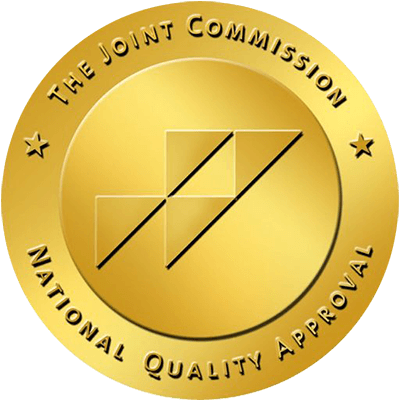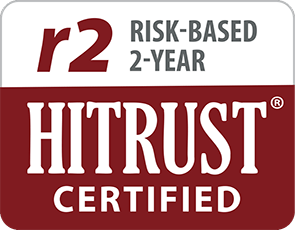Written by Ashley Kane,
Brightside Health
10 Minute Read

Medically reviewed by:
Erin O'Callaghan, PHD
Director of Therapy
10 Minute Read

GAD, the medical abbreviation for generalized anxiety disorder, is a mental health condition characterized by persistent and excessive worry about various aspects of daily life. Unlike typical anxiety, this disorder involves ongoing tension that can disrupt everyday activities and impact one’s quality of life.
Understanding the symptoms of generalized anxiety disorder and its treatments can help individuals manage their anxiety effectively and improve their well-being.
In this article, you’ll explore generalized anxiety disorder causes, symptoms, and potential management strategies.
What Is Generalized Anxiety Disorder (GAD)?
Generalized anxiety disorder (GAD) is characterized by excessive worry and anxiety that are difficult to control. It significantly impacts daily functioning, with symptoms present on more days than not.
Definition of Generalized Anxiety Disorder
The medical abbreviation for generalized anxiety disorder is GAD. GAD is characterized by persistent and excessive anxiety that goes beyond everyday worries. Some generalized anxiety disorder examples are restlessness, fatigue, difficulty concentrating, irritability, muscle tension, and sleep disturbances.
These symptoms can interfere with daily life, affecting both personal and professional activities. Individuals may experience these symptoms of generalized anxiety disorder frequently, often without a clear reason or trigger. The distress associated with GAD is pervasive, leading to a constant state of apprehension and unease.
Understanding these symptoms of generalized anxiety disorder is crucial for recognizing and managing the disorder effectively.
Generalized Anxiety Disorder Symptoms
Generalized anxiety disorder (GAD) is characterized by a range of symptoms that can significantly affect daily life.
Individuals with GAD often experience persistent and excessive worry about various aspects of life, even when there is little or no reason to worry.
They may have trouble concentrating and might feel constantly restless or on edge. This persistent state of alertness can lead to issues like muscle tension, trembling, or twitching.
Fatigue is a common symptom, often due to the mental and physical strain of ongoing anxiety.
People with GAD frequently report difficulties with sleep, such as trouble falling or staying asleep, leading to further distress.
Common symptoms of GAD include:
- Frequent or long-lasting tension
- Worry with little or no clear cause
- Fatigue
- Problems concentrating
- Restlessness
- Sleep problems
Physical symptoms might also include sweating, headaches, and feeling easily startled.
These symptoms can vary and may come and go over time. In children, symptoms might manifest as excessive worry about school performance or family issues.
Feeling twitchy or experiencing hot flashes can also occur, further adding to the discomfort. Being able to identify these symptoms is crucial for recognizing GAD and seeking appropriate treatment.
What Causes Generalized Anxiety Disorder?
The exact cause of generalized anxiety disorder (GAD) isn’t fully understood. It’s thought to be influenced by a combination of factors.
Biological Factors
Genetics may play a role, as GAD can run in families. Imbalances in brain chemistry involving neurotransmitters like serotonin and dopamine are also considered potential contributors.
Environmental Factors
Experiencing traumatic events, child abuse, or being in a highly stressful environment might trigger GAD. Long-term stress from personal circumstances or work-related issues can be a significant factor.
Life Experiences
Individuals who’ve faced significant life changes or disruptions might be more vulnerable to developing GAD. Childhood adversity, such as family instability, is often associated with increased anxiety levels.
Other Conditions
Managing chronic illness or disease can lead to symptoms of GAD. Additionally, having another anxiety disorder, such as panic disorder or social phobia, may increase the likelihood of developing generalized anxiety disorder.
How Is GAD Diagnosed?
Diagnosing generalized anxiety disorder (GAD) requires a careful and thorough evaluation. Health professionals, often using criteria from the generalized anxiety disorder DSM-5-TR, identify excessive anxiety and worry occurring more days than not for at least six months.
A mental health professional may employ a variety of methods, such as clinical interviews and questionnaires.
A widely used tool is the generalized anxiety disorder 7-item (GAD-7) questionnaire, which helps evaluate the severity of GAD symptoms.
The doctor also assesses whether these symptoms are not attributable to other mental disorders or conditions.
In addition to psychological evaluation, doctors often rule out other potential causes with medical tests. They focus on ensuring that symptoms aren’t due to underlying physical conditions or medications.
Want to speak 1:1 with an expert about your anxiety & depression?
Generalized Anxiety Disorder Treatment
Generalized anxiety disorder (GAD) treatment often includes psychotherapy and medications. The choice of treatment depends on individual needs, and a combination of both approaches is frequently recommended for greater effectiveness.
Psychotherapy
Psychotherapy is a critical component in the treatment of generalized anxiety disorder.
Cognitive behavioral therapy (CBT) is a well-researched approach and has been found to significantly reduce anxiety levels. CBT focuses on identifying and changing negative thought patterns and behaviors that contribute to anxiety.
It often involves structured sessions with a therapist, where patients learn coping mechanisms and stress management techniques. Training in relaxation techniques and gradually facing anxiety-provoking situations are common practices within CBT.
Psychodynamic therapy and interpersonal therapy are other options. These therapies help explore the underlying emotional conflicts and relationships that may contribute to anxiety.
While CBT is more commonly recommended, these approaches can offer additional support depending on the individual’s unique circumstances and preferences.
Medications
Medications play a pivotal role in managing GAD symptoms.
Selective serotonin reuptake inhibitors (SSRIs) and serotonin-norepinephrine reuptake inhibitors (SNRIs) are typically first-line treatments. They work by stabilizing neurotransmitter levels in the brain, which helps decrease anxiety symptoms.
Common SSRIs include fluoxetine and sertraline, while venlafaxine is a popular SNRI. It usually takes a few weeks for these medications to have a full effect, and they are generally well-tolerated.
In some cases, benzodiazepines may be prescribed for short-term relief due to their risk of dependency.
Buspirone is another option that provides anti-anxiety benefits without the sedation associated with benzodiazepines.
A healthcare professional should tailor the specific medication, dosage, and treatment duration based on the patient’s condition and response to the treatment.
Do You Need Professional GAD Help?
Struggling with anxiety can feel overwhelming, but you don’t have to face it alone.
Brightside Health offers expert, evidence-based treatment designed to help you regain control and find relief. With personalized therapy and medication plans, you can start feeling better from the comfort of your home.
Take the first step toward a brighter future—get started with Brightside Health today and take our free online anxiety test.
Want to speak 1:1 with an expert about your anxiety & depression?
Key Takeaways
Generalized anxiety disorder (GAD) is a chronic condition characterized by persistent and excessive worry that can interfere with daily life.
Individuals with GAD often experience continuous tension, a sense of dread, and physical symptoms like fatigue, trouble concentrating, and muscle tension.
Management options such as therapy, medication, or a combination of both can help individuals manage their GAD symptoms effectively.
The most important point is that recognizing the signs of generalized anxiety disorder early and seeking appropriate treatment can improve quality of life and prevent GAD symptoms from worsening.
FAQs
What is it called when someone worries about everything?
People with GAD experience persistent and excessive worry about different life aspects like health, work, and daily responsibilities.
Unlike normal anxiety, this type of worry is chronic and can interfere with daily functioning. GAD symptoms may include difficulty concentrating, fatigue, and muscle tension. Recognizing these signs is crucial to seeking appropriate help and improving quality of life.
How many people have generalized anxiety disorder?
Globally, the prevalence rate of GAD varies, but it remains one of the most common anxiety disorders, affecting a significant portion of the global population.
In the United States alone, it’s estimated that around 6.8 million adults experience GAD annually, with women being more frequently diagnosed than men. This disorder can begin at any age, though it often starts in early adulthood.
Factors such as genetics, brain chemistry, and life experiences can influence the risk of developing GAD.
How long does an anxiety disorder last?
The duration of generalized anxiety disorder can vary from person to person.
For some, GAD is a temporary condition, especially if triggered by a specific life event or stressor. However, for many, it can be a chronic condition lasting years, particularly without treatment.
Treatment, such as therapy and medication, can help manage GAD symptoms, potentially reducing their intensity or duration.
It’s important to seek help early, as this can improve the long-term outcome and lead to a more manageable existence with the disorder.
Can generalized anxiety disorder (GAD) be prevented?
While it’s not possible to entirely prevent GAD, certain strategies may help reduce its risk.
Maintaining a healthy lifestyle, managing stress effectively, and seeking treatment for any anxiety symptoms early on can help mitigate the impact of GAD.
Building strong relationships and pursuing activities that enhance well-being can also be beneficial.
Awareness of family history regarding mental health issues can prompt early intervention, which plays a crucial role in managing or potentially preventing GAD’s development.
What is severe generalized anxiety disorder?
Severe generalized anxiety disorder is marked by intense worry and anxiety that significantly impairs daily life. Individuals may find it hard to control their fears, which can affect personal and professional aspects.
Symptoms are persistent and may include severe restlessness, heightened fatigue, and sleep disturbances.
Treatment for severe GAD often involves a comprehensive approach, incorporating medication, therapy, and lifestyle adjustments. Addressing severe GAD is crucial, as it can prevent further complications like depression.
What is the difference between generalized anxiety disorder and phobic disorder?
Generalized anxiety disorder and phobic disorder differ mainly in focus and triggers of anxiety.
GAD is characterized by worry about numerous aspects of life without a specific trigger, while phobic disorder involves intense fear of a particular object, situation, or activity.
Phobias are often deeply rooted and can lead to avoidance behavior.
Treatment varies, focusing on exposure therapy for phobias and cognitive-behavioral therapy for GAD. Identifying these distinctions helps in tailoring effective treatment strategies.
What is the difference between social anxiety and generalized anxiety?
Social anxiety disorder (SAD) and generalized anxiety disorder (GAD) are distinct conditions.
SAD involves intense fear and avoidance of social situations due to fear of scrutiny, embarrassment, or judgment, while GAD encompasses a broader range of worries unrelated to social interactions.
Both can severely impact daily life but require different treatment approaches.
Social skills training may be beneficial for SAD, while GAD treatment often focuses on broader cognitive-behavioral strategies. Understanding these differences aids in appropriate GAD diagnosis and management.
What is the prognosis for generalized anxiety disorder (GAD)?
The prognosis for GAD depends on factors like the severity of symptoms and when treatment begins.
With appropriate treatment, many people experience an improvement in symptoms and lead fulfilling lives. Ongoing management, through therapy and possibly medication, can help maintain stability.
The long-term outlook is optimistic if intervention occurs early, with tailored strategies for each individual’s needs.
Persistent self-care and professional support play a vital role in maintaining improvements and preventing relapse.
How can you live with generalized anxiety disorder?
Living with GAD involves implementing strategies to manage symptoms effectively.
Regular therapy sessions, such as cognitive-behavioral therapy, can provide coping skills for managing anxiety.
Lifestyle changes, such as regular physical activity and a balanced diet, can positively impact mental health.
Building a strong support network and practicing stress-reduction techniques like meditation and mindfulness are also beneficial.
Consistency in these practices can lead to improved quality of life and symptom control.
When should you see a healthcare provider about generalized anxiety disorder (GAD)?
Seeking help from a healthcare provider is essential when anxiety interferes with daily life or causes significant distress.
Professional evaluation using criteria for generalized anxiety disorder can lead to an accurate GAD diagnosis and tailored treatment plan, and early intervention often results in a better outcome.
Symptoms like persistent worry, restlessness, and sleep disturbances that persist despite self-help measures warrant professional consultation.
Being proactive about mental health care is key to effectively managing GAD and enhancing overall well-being.














